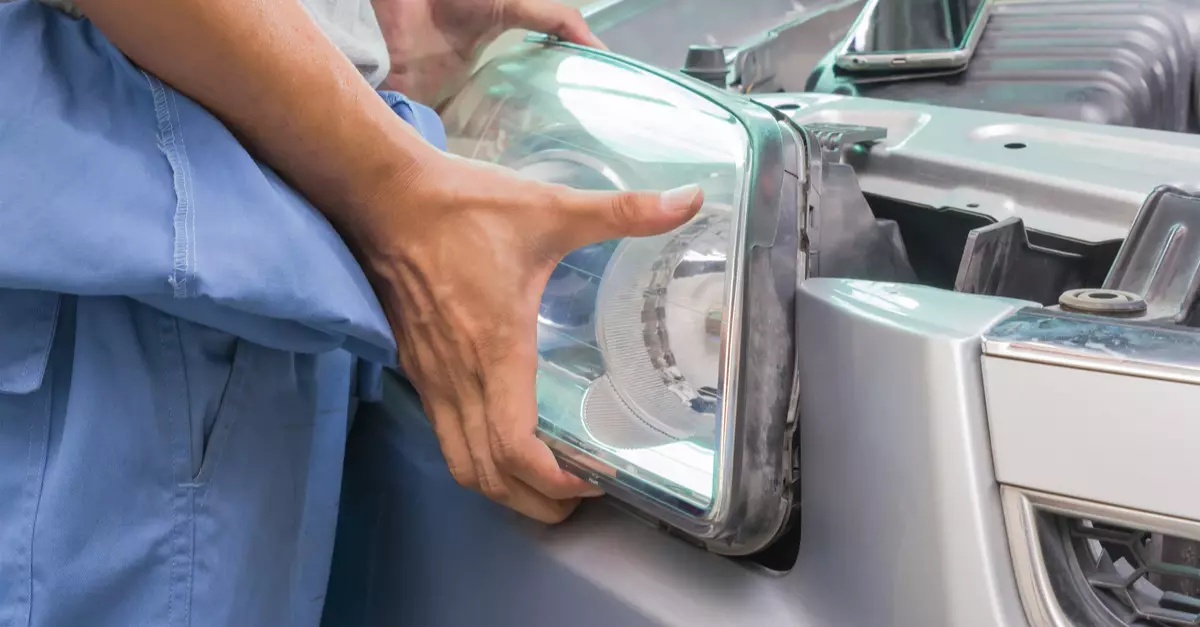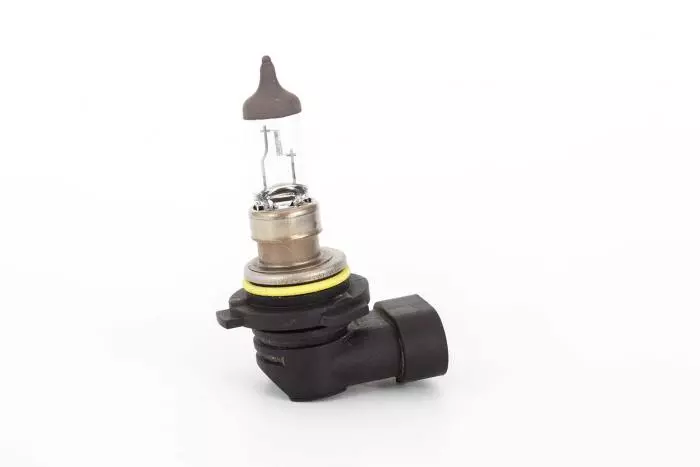
Car headlight bulbs have become ever more advanced in recent years, from complex headlight units LED car lights that swivel and deactivate individually to avoid dazzling traffic up ahead, to always-on daytime running lights.
For the DIY mechanic, it's important to note that bulb technology has moved on too, with traditional halogen bulbs being replaced by LED, HID and Xenon bulbs. Also, if you're replacing an H1, H2, H3, H4, H7 bulb, H11, HB3 and HB4, you need to make sure it's swapped for a bulb with the same H rating.
Regardless of the tech, car lights are just about the most important safety feature on your vehicle. The lights on a vehicle have three purposes – to allow you to be seen, to allow you to see and to give other road users a signal of your intentions. So let's run through a bit about your car's lights and the bulbs you will need to replace during your regular maintenance.
The different types of car headlight bulbs
In this section, our experts will answer some of the common questions asked about car headlight bulbs and rear bulbs, starting at the front of the car.
What does an H7 bulb do?
An H7 bulb – along with other halogen bulbs such as H1, H3, H4 etc – indicates the type of fitting. H7 bulbs tend to be used for dipped – or low – beam, while H1 bulbs can be high or dipped beam, depending on output.
Other H-rated bulbs can be used for fog lights and indicators – your Haynes Manual will tell you which bulbs your car uses, along with the watt rating for each.
What about the car’s side lights?
The car side lights, or sidelights, can be used when visibility is slightly reduced, but not to the point when dipped headlights are necessary.
In recent years, these have been replaced on new cars by daytime running lights (DRLs), which are illuminated as soon as the vehicle’s ignition is switched on, and are only extinguished when the dipped headlights are activated and, sometimes, when you turn on an indicator.
And dipped headlights and full beams?
The dipped headlights should be used when visibility is compromised by the onset of darkness, or by adverse weather such as rain, fog or snow.
Full-beam headlights are the brightest lights at the front of the car, and should be used as above and when there is no other road user ahead of you or approaching.
When should front foglights be used?
Some cars, but not all, have a pair of front foglights. These are designed to spread the light beam so it illuminates the edges of the road closer to the front of the car, making it easier to see the kerb in thick fog.
In modern cars, they are sometimes used to mimic the effect of advanced directional headlights – when the steering wheel is turned, the foglight for that side of the car will illuminate to light up the road in the direction that you are turning.
What are indicators?
Finally, at the front there will be two orange indicators; these flash on either the left or right side to let other road users know that you intend to make a turn. You will often find secondary indicators on the front wings or door mirrors.
How have car lights evolved?
Headlight technology is improving all the time, and has moved a long way from the dim bulbs of old. Many cars now have LED headlights, which are brighter and longer-lasting than xenon HIDs, yet which consume less energy. Finally, some car makers are now offering 'laser' headlights, which promise yet another step in brightness and efficiency.
What lights are at the rear of a car?
At the back of a car are bright red tail lights, which are illuminated when the headlights or sidelights are on. The brake lights are the same red as the tail lights, but are much, much brighter and are only illuminated when you press the brake pedal.
Again, a rear foglight helps your car to be seen in fog and heavy rain, while a white reversing light signals to others that you intend to reverse, and helps you to see behind.
As with front lights, traditional bulbs in the rear lights are being replaced with LED technology, which is brighter, more efficient and more reliable.

How to check your car lights
Check all external car lights and the horn. Visually check all accessible wiring connectors, harnesses and retaining clips for security, and for signs of chafing or damage.
If you need to check your brake lights and indicators unaided, back up to a wall or garage door and operate the lights. The reflected light should show if they are working properly.
If a single indicator light, brake light or headlight has failed, it is likely that a bulb has blown and will need to be renewed. If both brake lights have failed, it is possible that the switch has failed.
If more than one indicator light or headlight has failed, it is likely that either a fuse has blown or that there is a fault in the circuit. The main fuses are located in the engine compartment fuse/relay box on the left-hand side of the engine compartment. Unclip and remove the cover for access. In our manuals you can refer to the wiring diagrams at the end for details of fuse locations and circuits protected.
Additional fuses are sometimes located in the passenger compartment fuse/relay box. Again, your Haynes manual or the car's handbook will tell you where this is. To renew a blown fuse, remove it, where applicable, using the plastic tool provided or needle-nosed pliers. Fit a new fuse of the same rating, available from car accessory shops. You must find the reason that the fuse blew.
Car bulbs: the three main headlight types
Headlights need no introduction. They aren't particularly complex but it's well worth knowing your way around them should you ever need to change a blown car bulb. Within most headlight units you're likely to find the main/dipped beam, the sidelight and in many cases the indicator (which will be obvious because it will be orange).
Depending on the age of your car you may also have daytime running lights (DRLs) which come on whenever the engine is running, although these sometimes employ the services of the sidelight, rather than having a dedicated bulb.
Some cars also have cornering lights, which come on, as the name suggests, when the front wheels steer left or right. Sometimes the actual bulb moves, and on other applications the bulb is aimed 'outwards' rather than forwards, and responds to steering input.
It's well worth familiarising yourself with your bulbs to make sure you know what's what. There are three main types of bulb that you're likely to find in your headlight, and it's not uncommon to find different types of bulbs within the headlight depending on what the bulb is used for.

Halogen bulbs
Until relatively recently all headlight main/dipped bulbs in cars and motorcycles were halogen bulbs, with a filament. They operate in the same way as a regular household bulb in that an electrical current heats up a very thin metal filament.
In most cases the bulbs are filled with halogen gas which allows the bulb to run hotter and therefore brighter. In some cases bulbs are filled with xenon gas (don't confuse these with xenon HID lights!) which can give a whiter, brighter light.
Indicators and sidelights also commonly use this technology, although they are steadily being replaced with LEDs.

HID bulbs
HID stands for High Intensity Discharge, and HIB bulbs don't have a filament like regular bulbs. They operate on a gas discharge principle and the light comes from an arc of electricity that jumps across two electrodes contained within a glass tube filled with xenon gas. HIDs require a ballast which is a small box of electronics that both starts the light and controls its output. They are much brighter and whiter than regular filament bulbs and generally last longer (around 2000 hours).
HID bulbs cost considerably more than regular bulbs, and you'll need to disconnect the battery's negative cable before changing the bulb, because of the higher voltages involved (approximately 22,000 v). Make sure that battery disconnection won't cause any car computer 'memory' issues before disconnecting it. If it will, use a battery memory saver.

LED car lights
LED stands for Light Emitting Diode, and due to their low power usage and ultra long life, LED car lights are becoming much more common. Initially, car makers used them for main/dipped beams but they're very common in indicators and sidelights now, both front and rear.
It's possible to upgrade your car's filament bulbs to LEDs but be aware that due to their low power consumption they can trigger warning lights on your dash as the car may think the bulb isn't working. If this occurs you need a 'CANbus LED' which are fitted with a tiny resistor to simulate the power usage of a normal bulb.
Also check your national regulations. In the UK, a vehicle should fail its annual MOT inspection if a light unit has an LED bulb that wasn't fitted as standard by the vehicle manufacturer.